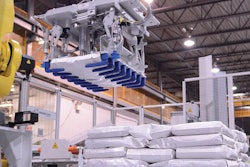
Employees make or break any business. Your people are your greatest resource and your most important asset. What are you doing to further develop and grow your employees?
If you want to create a high-performance feed and grain business unit, then you need to value the growth and improvement of your team and promote a culture of development.
Need proof? Gallup research indicates almost nine in 10 millennials say professional development or career growth is important to them. Career growth opportunities are also the number one reason stated by people for changing jobs.
And, if you question the magnitude of the importance of people, then you might be interested in knowing that Gallup research finds businesses with strategic investment in employee development report 11% greater profitability and are twice as likely to retain employees as others.
A recent survey by Cornerstone found only 32% of respondents had received training and development to better perform their jobs in the past six months. Most managers would likely argue that this is a gap worth filling.
The data is pretty compelling: employee development matters. As we continue to “resurface” after being submerged by the pandemic and now face a very competitive labor market and the era of “the great resignation,” it’s time to hone that benefit at your company.
Not every employee is the same
Good professional development begins with knowing your employees. While everyone needs purpose, training and development, not everyone learns in the same way or needs the same opportunities, approach or development focus area.
Just as each employee is unique, their professional development should be designed to best fit them and to best attempt to achieve the desired outcomes.
Understanding the traits, strengths and areas for growth of your employees takes time and effort. If you are new to your team or if you have new team members, it may take months or a year or more to get a full picture of how to manage and lead specific individuals, where they need or want professional development, and how to help each grow professionally.
It’s also important to understand what each employee values and how this relates to their professional development.
Today’s competitive job market also factors into employee development. From your perspective, you may be concerned about investing in people when there is uncertainty regarding their length of service to your business.
From the employee perspective, they may be looking for growth and development, so providing that for them may increase the likelihood of them staying, while not providing it may contribute to their desire to look for other career opportunities.
You must recognize and accept that for some employees, a position in your feed and grain business may be the initial launch or stepping stone in their career path, while for others, it may be their final destination. You have to balance all factors in the situation.
Individualize development opportunities
What are some things you can do to help yourself manage and promote development in each person?
You may start with keeping track of information about each of your employees — either making mental notes or, even better, creating a spreadsheet or OneNote folder.
Some questions to ask: What are each employee’s own career goals and development goals? What excites them about their position? What is their working style or preferences? What motivates them?
Keep track of your own observations and assessments of employees as you work with them or observe their work with others. What areas are needed for development in each person?
Keep track of ideas for how you can further their development in those areas — maybe it’s a closer review of their work or additional in-depth feedback. Maybe it’s larger “stretch” assignments or having them supervise others. Maybe it’s you delegating and empowering them to perform higher-level responsibilities periodically, etc.
Assess and log notes about how you have or will coach, mentor or provide support to your employee.
The importance of support and empowerment
Don’t underestimate the importance of coaching and mentoring to some employees. How have you recognized the work and progress of each employee?
Coaching and frequent, regular feedback is part of employee development and can improve employee engagement and boost job satisfaction, which can improve retention and increase performance.
Another important approach not to be overlooked is setting the expectation of and empowering employees to take some ownership in their own development.
What are some of the areas most desired by employees for professional development? Some examples are management and leadership training; professional certifications; technical skills training; teamwork and interpersonal skills training; tuition assistance; time management; project management; effective communication training; and diversity training.
Once again, matching professional development uniquely with specific employees is key.
You may want to consider providing flexible options. These range from smaller “moment learning” opportunities to larger time commitment opportunities, as well as mobile and on-demand opportunities rather than fixed-time experiences that require participation or completion at specific times on specific dates. This would help meet the needs of diverse employees.
Support and empower employee growth
It’s not just important to grow and develop your employees. Don’t forget to lead by example and take ownership and pursue your own professional growth and development.
Share with your employees what experiences you have pursued previously that you found valuable, and communicate what you are currently pursuing that contributes to your own growth.
Leading by example demonstrates that you do not merely provide lip service to valuing professional development. It establishes that it is valuable enough for your own time and that you are committed to it for yourself as well. This also builds your employees’ trust in you.
People are the most important asset in your feed and grain business. Investing in your employees with professional development will pay dividends. It can contribute to attracting and retaining good employees, improving knowledge, skills and performance, increasing employee engagement, as well as increasing job satisfaction.
These are all critical components that contribute to your pursuit of a high-performance feed and grain business unit and to upping your game.


















